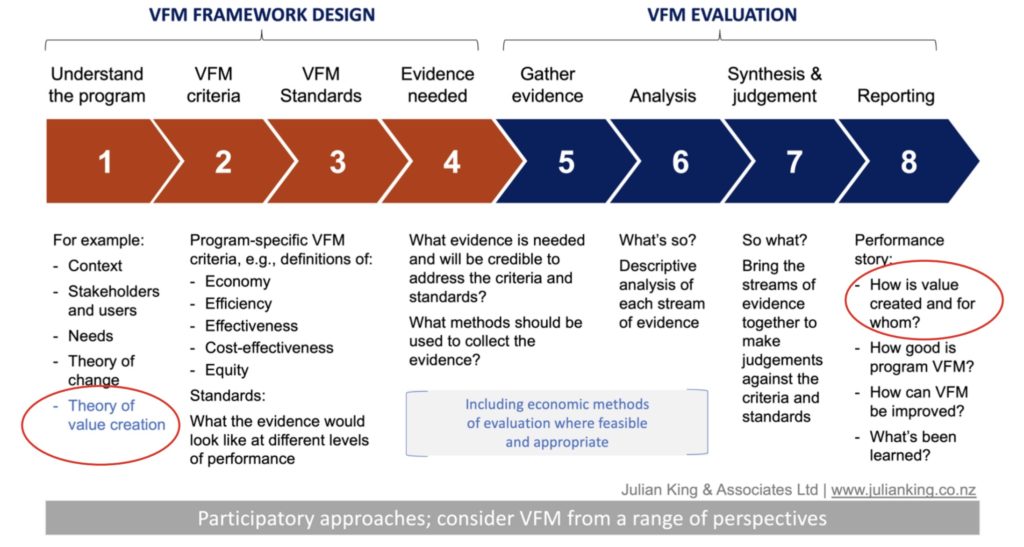Theory of value creation
What do a cruise ship and a social investment have in common?

Imagine an initiative to provide governance training for citizens who volunteer to serve on the governance boards of early childhood education services. They’re generously donating their time and expertise for a worthy cause. But many have no previous governance training or experience.
A theory of change might propose that governance training would result in better governance of these education services, which in turn could make them more effective organisations, leading to better educational outcomes. That describes how we suppose change happens. But it doesn’t describe how the investment creates value.
We could add a theory of value creation, along the lines of: Substantial resources are allocated to early childhood education (nearly $2 billion a year from NZ Government, plus a significant contribution from parents). For a relatively small additional cost, governance training could improve the value we obtain from the existing investment.
This illustrates a value creation mechanism we could call leverage. Much as a small rudder can steer a big ship, sometimes a small, strategic investment can help a massive social investment to sail straighter. There are lots of value creation mechanisms, leverage is one. Often a program has several value creation mechanisms that work together. For example, ‘creating value’ also includes possibilities like accumulating, protecting, attracting, sharing, or sustaining things that are valuable to people.
A theory of value creation extends a theory of change to consider the mechanisms by which new, transformed or superior value is created from the resources consumed by a program. While a theory of change conceptualises programs as vehicles for ‘making a difference’, a theory of value creation views them as transformational processes that convert resources (funding, expertise, relationships, etc) into significant social value.
Why does it matter? Because if we can define a program’s value proposition, we are better placed to evaluate it.
How might we use a theory of value creation in an evaluation? My colleagues and I have started identifying value creation mechanisms when we’re addressing evaluative questions about value for money (VfM).
In the design phase of the evaluation, a theory of value creation helps us, and stakeholders, get to a shared understanding of what VfM means in their program. Articulating this understanding helps us co-develop appropriate criteria and standards. These in turn help us to identify, gather and analyse appropriate evidence and to make valid judgements that get to the heart of what it means for the program to create value. In the evaluation report, we can refine the theory to reflect what we’ve learned about how the program creates value (and what sort of value, by who, for who).

This is a pretty new idea and we learn something each time we use it. Could it be helpful in your work?
Want to know more? See:
King, J. (2021). Expanding theory-based evaluation: incorporating value creation in a theory of change. Evaluation and Program Planning, Volume 89, December 2021. https://doi.org/10.1016/j.evalprogplan.2021.101963.
June, 2021
